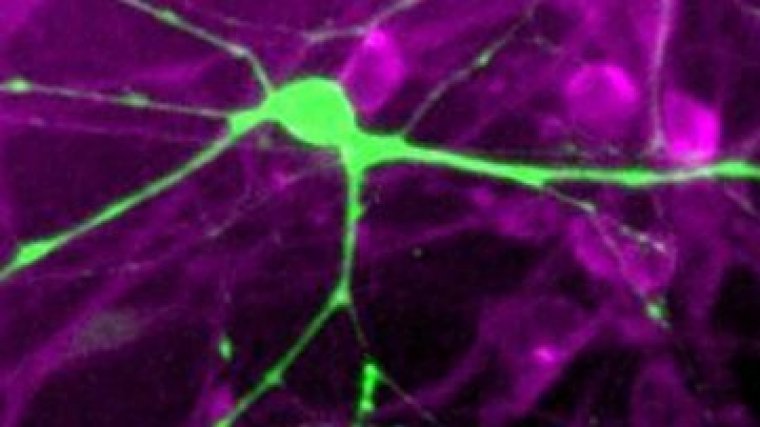| Health / Health News |
Too much protein may kill brain cells as Parkinson’s progresses
NINDS | MAY 8, 2014
Scientists may have discovered how the most common genetic cause of Parkinson’s disease destroys brain cells and devastates many patients worldwide. The results may help scientists develop new therapies.

Parkinson’s killer lurks within. Image credit: Dawson lab, JHU Morris K. Udall Center of Excellence for Parkinson’s Disease.
The investigators found that mutations in a gene called leucine-rich repeat kinase 2 (LRRK2) may increase the rate at which LRRK2 tags ribosomal proteins, which are key components of protein-making machinery inside cells. This could cause the machinery to manufacture too many proteins, leading to cell death.
Parkinson’s disease is a degenerative disorder that attacks nerve cells in many parts of the nervous system, most notably in a brain region called the substantia nigra, which releases dopamine, a chemical messenger important for movement.
For the majority of cases of Parkinson’s disease, a cause remains unknown. Mutations in the LRRK2 gene are a leading genetic cause. They have been implicated in as many as 10 percent of inherited forms of the disease and in about 4 percent of patients who have no family history.
LRRK2 is a kinase enzyme, a type of protein found in cells that tags molecules with chemicals called phosphate groups.
The process of phosphorylation helps regulate basic nerve cell function and health. Previous studies suggest that disease-causing mutations, like the G2019S mutation, increase the rate at which LRRK2 tags molecules. Identifying the molecules that LRRK2 tags provides clues as to how nerve cells may die during Parkinson’s disease.
In this study, the researchers used LRRK2 as bait to fish out the proteins that it normally tags. Multiple experiments performed on human kidney cells suggested that LRRK2 tags ribosomal proteins. These proteins combine with other molecules, called ribonucleic acids, to form ribosomes, which are the cell’s protein-making factories.
Next, the researchers investigated whether phosphorylation could be linked to cell death, by studying nerve cells derived from rats or from human embryonic stem cells. Genetically engineering the cells to have a LRRK2 mutant gene increased the amount of cell death and phosphorylated s15. In contrast, the researchers prevented cell death when they engineered the cells to also make a mutant s15 protein that could not be tagged by LRRK2.
Previous studies on flies showed that genetically engineering dopamine-releasing nerve cells to overproduce the LRRK2 mutant protein induced nerve cell damage and movement disorders. Scientists found that the brains of these flies had increased levels of phosphorylated s15 and that engineering the flies so that s15 could not be tagged by LRRK2 prevented cell damage and restored normal movement.
Interestingly, the brains of the LRRK2 mutant flies also had abnormally high levels of all proteins, suggesting that increased s15 tagging caused ribosomes to make too much protein. Treating the flies with low doses of anisomycin, a drug that blocks protein production, prevented nerve cell damage and restored the flies’ movement even though levels of s15 phosphorylation remained high.
Changes in the way cells make proteins might be a common cause of Parkinson’s disease and possibly other neurodegenerative disorders.
Scientists think that blocking the phosphorylation of s15 ribosomal proteins could lead to future therapies as might other strategies which decrease bulk protein synthesis or increase the cells’ ability to cope with increased protein metabolism.
YOU MAY ALSO LIKE




